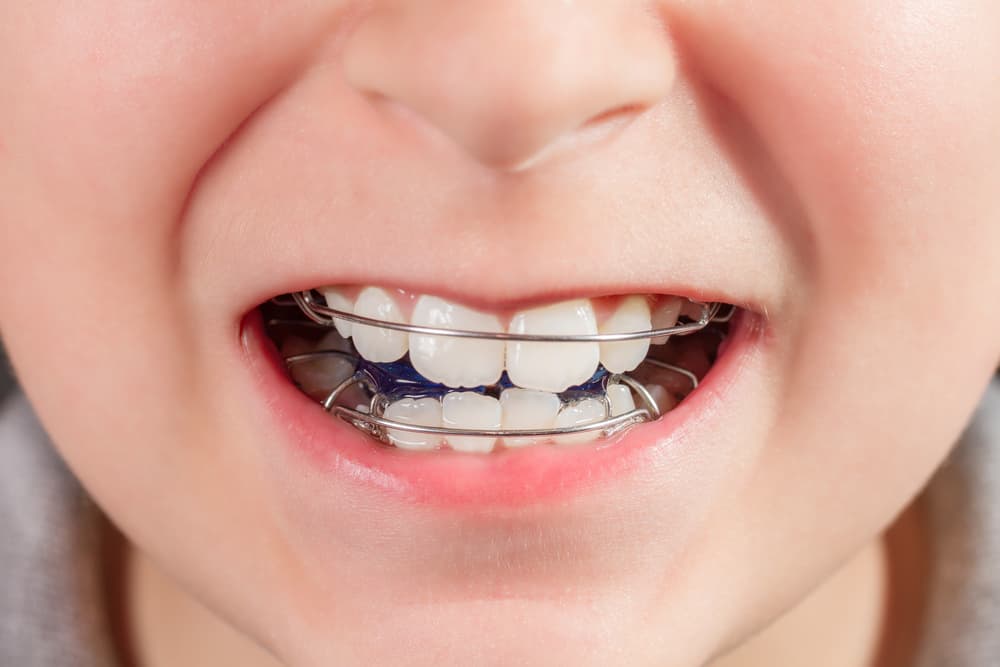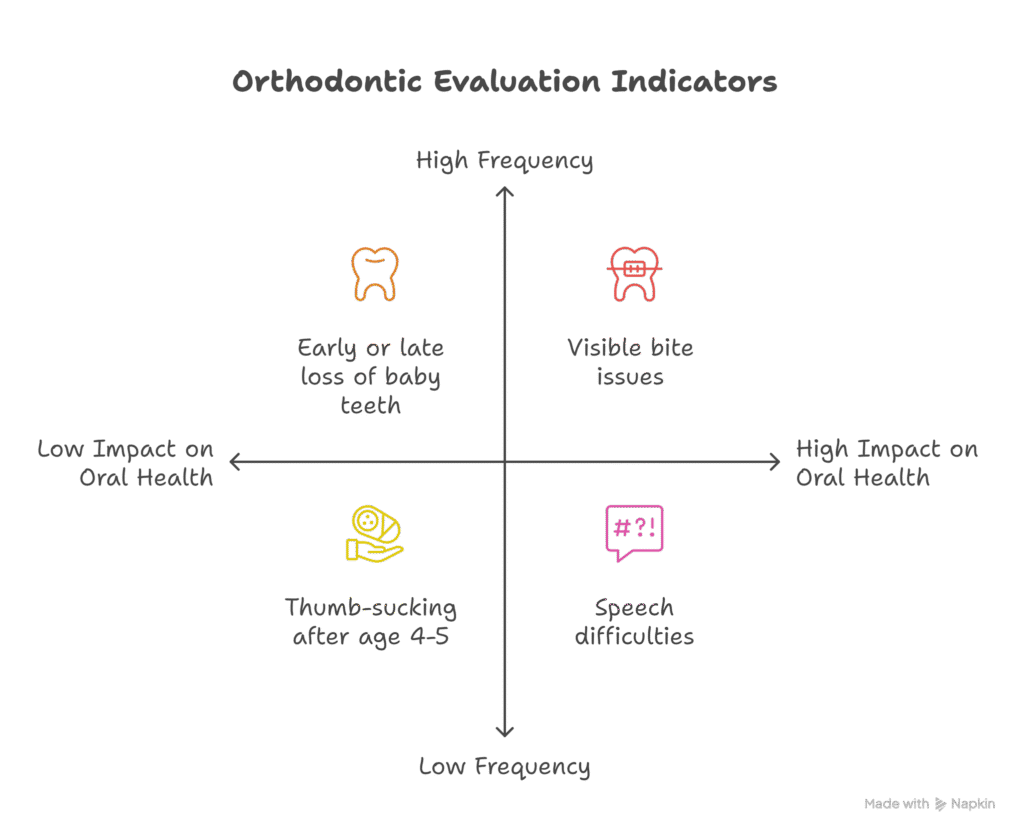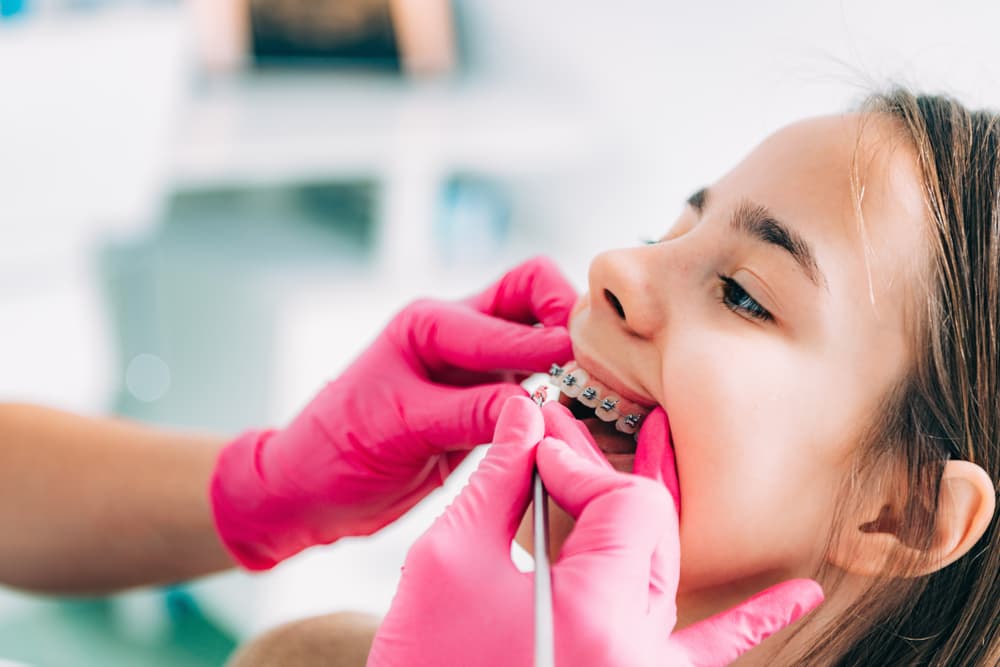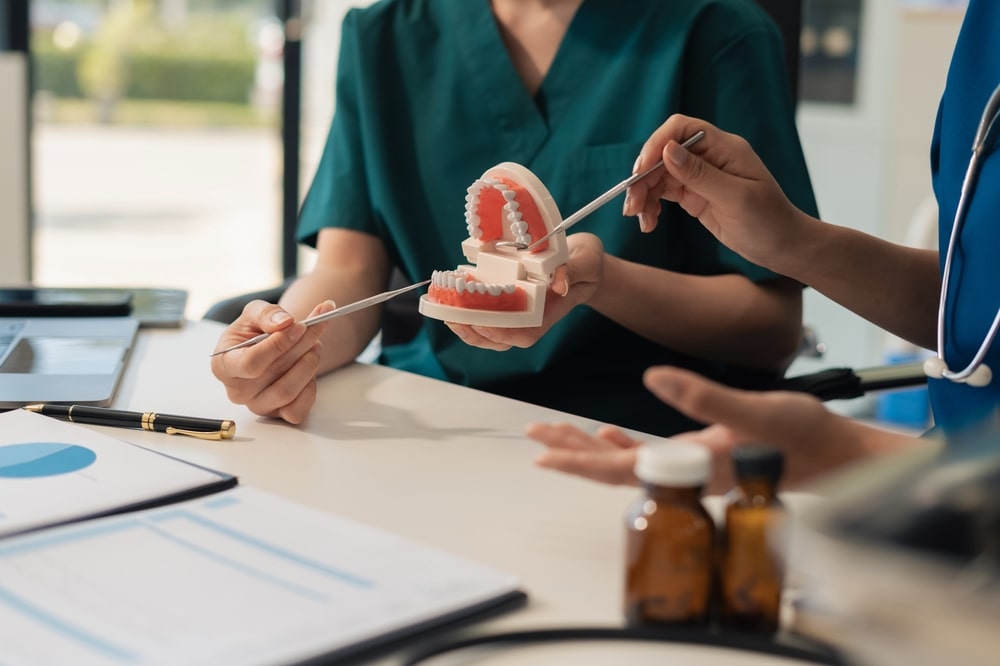As parents, we strive to give our children the best start in life, and that includes their oral health. While regular dental check-ups are essential, understanding the role of early orthodontic care can be a game-changer for your child’s developing smile and overall well-being.
Proactive intervention can address potential issues before they become more complex, saving time, discomfort, and expense in the long run.
What is Early Orthodontic Intervention (Phase One)?
Early orthodontic intervention, often referred to as Phase One treatment, focuses on addressing developing orthodontic problems in children who still have a mix of baby and permanent teeth.
Unlike comprehensive orthodontic treatment (Phase Two), which typically involves full braces or aligners when all permanent teeth have erupted,
Phase One aims to correct significant issues with jaw growth and tooth alignment at an earlier stage.
The primary goal of this initial phase is to optimize the environment for permanent teeth to erupt correctly and to guide proper jaw development.
This foundational work can prevent more severe problems from developing, potentially simplifying or shortening the need for later, more extensive treatment.
Why an Early Orthodontic Evaluation is Crucial (The “By Age 7” Recommendation Explained)
The American Association of Orthodontists (AAO) recommends that children have their first orthodontic evaluation by age seven, or at the first sign of an orthodontic problem (aaoinfo.org).

This recommendation isn’t necessarily for immediate treatment but for an early assessment.
At this age, a child’s jaw and teeth are still developing, making it an ideal time for an orthodontist to identify subtle issues that might not be visible to an untrained eye.
An early evaluation allows for:
- Proactive Planning: Detecting potential problems early enables the orthodontist to monitor your child’s growth and development, creating a tailored plan if and when intervention is needed.
- Leveraging Growth: Addressing issues while the jaws are still growing allows for more effective correction of skeletal imbalances.
- Addressing Widespread Need: Studies highlight the prevalence of orthodontic issues in children; for instance, an epidemiological study in Saudi Arabia found that 88.7% of children had a moderate or definite need for preventive and interceptive orthodontic treatment (nature.com). This underscores the global importance of early assessment.
7 Signs Your Child May Benefit from Early Orthodontic Care
As a parent, you are often the first to notice changes in your child’s oral development.

While a professional evaluation is key, here are some common signs that your child might benefit from early orthodontic care:
- Early or Late Loss of Baby Teeth: Losing baby teeth too early (before age 5) or too late can indicate underlying issues with eruption paths for permanent teeth.
- Difficulty Chewing or Biting: Issues with bite alignment can make eating uncomfortable or inefficient.
- Mouth Breathing: Chronic mouth breathing can be a sign of obstructed airways and can affect jaw development and facial structure.
- Thumb-Sucking or Finger-Sucking After Age 4-5: Prolonged habits can lead to open bites or jaw alignment problems.
- Crowded, Crooked, or Misplaced Teeth: Visible irregularities in tooth alignment are a clear indicator.
- Jaws That Shift or Make Sounds: Clicking or popping sounds, or jaws that shift when biting, could signal a jaw joint (TMJ) issue.
- Speech Difficulties: Certain speech impediments can be linked to bite problems or tongue positioning.
- Protruding Front Teeth: Teeth that stick out significantly are at a higher risk of accidental trauma (factoriaortho.com).
- Visible Bite Issues: This includes crossbites (upper teeth bite inside lower teeth), underbites (lower jaw protrudes), deep bites (upper front teeth excessively overlap lower teeth), or open bites (front teeth don’t meet when biting).
If you observe any of these signs, an evaluation with an orthodontist is highly recommended.
The Transformative Benefits of Early Orthodontic Treatment
Early orthodontic intervention offers a multitude of benefits that extend beyond just straight teeth, impacting your child’s overall health and confidence:

- Guides Proper Jaw Growth and Facial Symmetry: Interceptive treatment can help guide the development of facial bones, ensuring a more harmonious bite and facial profile (solanaortho.com).
- Creates Space for Permanent Teeth: By creating adequate space, early treatment can reduce crowding and potentially eliminate the need for permanent tooth extractions in the future (abcchildrensdentist.com).
- Corrects Harmful Oral Habits: Appliances can help break habits like thumb-sucking, tongue thrusting, or prolonged pacifier use that can negatively impact tooth and jaw development.
- Reduces Risk of Dental Trauma: For children with protruding front teeth, early treatment can bring these teeth into alignment, significantly reducing their vulnerability to fractures or other injuries (webbpediatricdentistry.com).
- Improves Chewing and Digestion: A proper bite allows for more efficient chewing, which aids in digestion.
- Enhances Oral Hygiene: Straight teeth are easier to clean, reducing the risk of cavities and gum disease.
- Shortens or Simplifies Future Comprehensive Treatment: Phase One treatment can lay the groundwork, making any necessary Phase Two treatment shorter, less complex, and potentially less costly (aaoinfo.org).
- Boosts Self-Confidence and Self-Esteem: A healthy, aesthetically pleasing smile can significantly impact a child’s confidence, especially during crucial developmental years.
Understanding Interceptive Treatments: What Options Are Available?
Early orthodontic treatments are varied and tailored to your child’s specific needs.
Here are some common types:
- Palatal Expanders: These appliances are used to gradually widen a narrow upper jaw, creating space for crowded teeth and improving breathing. They are particularly effective when the jaw bones are still developing.
- Space Maintainers: If a baby tooth is lost prematurely, a space maintainer can be placed to hold the space open, preventing adjacent teeth from shifting and blocking the eruption of the permanent tooth.
- Partial/Limited Braces: In some cases, a small number of braces may be applied to a few permanent teeth to correct specific issues, such as guiding an erupting tooth into position or correcting a crossbite.
- Removable Appliances: These might include retainers designed to hold space, correct minor misalignments, or influence jaw position.
- Habit-Breaking Appliances: Custom devices can be used to help children stop habits like thumb-sucking or tongue thrusting that contribute to orthodontic problems.
When to Start: The Difference Between Evaluation and Treatment
It’s crucial to distinguish between an early orthodontic evaluation and the start of active treatment. While the AAO recommends an evaluation by age seven, not all children will need immediate treatment at this age (colgate.com).
Many children will simply be monitored with periodic check-ups (a “watch and wait” approach) to track their development.
Treatment is initiated only when it’s clear that intervention can provide a significant benefit to your child’s growth and dental health.
Your orthodontist will determine the optimal timing for any recommended treatment of adult orthodontics healing.
Preventing Orthodontic Issues: General Tips for Parents
While some orthodontic issues are hereditary, parents can play a significant role in promoting healthy oral development and preventing certain problems:
- Good Oral Hygiene from an Early Age: Teach and supervise regular brushing and flossing to prevent cavities and gum disease, which can impact tooth eruption.
- Regular Dental Check-Ups: Consistent visits to a general dentist are vital for overall oral health and early detection of any emerging issues.
- Discouraging Harmful Oral Habits: Gently discourage thumb-sucking, finger-sucking, or prolonged pacifier use beyond age 4-5.
- Balanced Diet for Strong Teeth and Bones: A nutritious diet supports healthy bone growth and strong tooth development.
- Mouthguards for Sports: If your child participates in sports, a custom-fitted mouthguard can protect teeth and jaws from injury.
What to Expect at Your Child’s First Orthodontic Consultation
At Smile Makers Dental Care, your child’s first orthodontic consultation is designed to be a comfortable and informative experience.

Led by Dr. Seema Shetty, our comprehensive evaluation includes:
- A thorough examination of your child’s teeth, jaws, and facial structure.
- Digital X-rays and photographs to assess underlying development.
- A clear explanation of any findings, whether immediate treatment is recommended, or if a “watch and wait” approach is best.
- An opportunity for you to ask questions and discuss any concerns about your child’s oral health.
Our patient-centric approach ensures that we tailor advice and potential treatment plans to your child’s unique needs, focusing on their comfort and long-term oral health.
Conclusion: Investing in Your Child’s Lifetime Smile
Early orthodontic care is a powerful investment in your child’s future, contributing not only to a beautiful smile but also to improved oral health, function, and self-confidence.
By understanding the importance of early evaluation and the benefits of interceptive treatments, you can proactively ensure your child develops the healthiest and happiest smile possible.
Ready to ensure your child’s smile grows beautifully?
Contact Smile Makers Dental Care today to schedule an early orthodontic evaluation.
Our experienced team, led by Dr. Seema Shetty, is here to provide personalized care and guidance every step of the way.
FAQs About Early Orthodontic Care for Children
Q1: What is the best age for children to get their first orthodontic evaluation?
A: The American Association of Orthodontists (AAO) recommends that children have their first orthodontic evaluation by age seven (aaoinfo.org). At this age, the orthodontist can identify subtle problems with jaw growth and erupting permanent teeth.
Q2: Does early orthodontic treatment mean my child won’t need braces later?
A: Not necessarily. Early (Phase One) treatment aims to correct major problems and guide jaw growth, creating a better foundation. While it can simplify or shorten the need for later comprehensive treatment (Phase Two), some children may still require braces or aligners in their adolescence for final alignment (aaoinfo.org).
Q3: How long does early orthodontic treatment usually last?
A: The duration of early orthodontic treatment varies depending on the specific issue being addressed and the child’s individual response to treatment, but it typically lasts between 6 to 18 months.
Q4: Is early orthodontic treatment painful for children?
A: While there might be some initial discomfort or soreness when appliances are first placed or adjusted, it is generally mild and manageable with over-the-counter pain relievers. Modern orthodontic techniques prioritize patient comfort.
Q5: Can early orthodontic treatment prevent jaw surgery?
A: In many cases, yes. Early intervention can guide jaw growth and correct skeletal discrepancies while the child’s bones are still developing. Addressing these issues early can sometimes prevent the need for more complex and invasive jaw surgery later in life when growth has ceased (aaoinfo.org).




